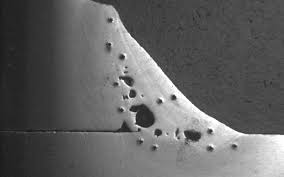Recognizing Porosity in Welding: Exploring Causes, Impacts, and Prevention Techniques
Porosity in welding is a consistent obstacle that can substantially influence the quality and stability of welds. As professionals in the welding sector are cognizant, recognizing the reasons, effects, and avoidance techniques associated with porosity is important for achieving durable and dependable welds. By diving into the origin of porosity, analyzing its damaging impacts on weld top quality, and discovering effective prevention strategies, welders can boost their understanding and abilities to generate top quality welds continually. The complex interaction of variables adding to porosity needs an extensive understanding and a proactive approach to make certain successful welding results.
Typical Root Causes Of Porosity
Contamination, in the type of dust, oil, or corrosion on the welding surface area, produces gas pockets when heated up, leading to porosity in the weld. Incorrect protecting takes place when the securing gas, frequently utilized in processes like MIG and TIG welding, is unable to fully shield the liquified weld pool from reacting with the surrounding air, resulting in gas entrapment and subsequent porosity. In addition, poor gas protection, commonly due to inaccurate circulation rates or nozzle positioning, can leave parts of the weld unprotected, permitting porosity to develop.
Impacts on Weld Quality
The visibility of porosity in a weld can significantly jeopardize the overall quality and integrity of the welded joint. Porosity within a weld creates gaps or dental caries that weaken the framework, making it extra susceptible to splitting, rust, and mechanical failing.
Additionally, porosity can prevent the efficiency of non-destructive screening (NDT) strategies, making it testing to identify other defects or gaps within the weld. This can result in substantial safety worries, specifically in critical applications where the structural honesty of the welded components is critical.

Prevention Techniques Summary
Given the damaging influence of porosity on weld quality, reliable prevention methods are crucial to keeping the structural stability of bonded joints. Additionally, choosing the suitable welding criteria, such as voltage, existing, and travel speed, can aid reduce the danger of porosity formation. By including these avoidance techniques right into welding practices, the event of porosity can be significantly minimized, leading to more powerful and more reputable bonded joints.
Relevance of Appropriate Shielding
Proper protecting in welding plays an important function in preventing atmospheric contamination and guaranteeing the stability of bonded joints. Protecting gases, such as argon, helium, or a mixture of both, are commonly made use of to protect the weld swimming pool from reacting with aspects airborne like oxygen and nitrogen. When these reactive elements enter into call with the warm weld swimming pool, they can create porosity, causing weak welds with decreased mechanical homes.

Insufficient shielding can result in numerous problems like porosity, spatter, and oxidation, compromising the structural stability of the bonded joint. For that reason, sticking to proper securing practices is vital to generate top quality welds with minimal issues and make certain the durability and dependability read what he said of the bonded elements (What is Porosity).
Tracking and Control Approaches
Just how can welders properly check and regulate the welding procedure to make sure ideal outcomes and stop defects like porosity? One secret technique is through the use of sophisticated surveillance modern technologies. These can include real-time monitoring systems that supply responses on specifications such as voltage, current, take a trip rate, and gas flow prices. By constantly keeping track of these variables, welders can determine discrepancies from the optimal problems and make immediate modifications to avoid porosity formation.

Furthermore, implementing appropriate training programs for welders is essential for checking and controlling the welding procedure properly. What is Porosity. Informing welders on the importance of keeping constant specifications, such as appropriate gas shielding and take a trip rate, can aid prevent porosity problems. Regular evaluations and qualifications can likewise make sure that welders excel in monitoring and regulating welding processes
Moreover, making use of automated welding why not check here systems can boost monitoring and control abilities. These systems can precisely regulate welding specifications, a knockout post minimizing the probability of human error and making sure consistent weld high quality. By combining advanced surveillance technologies, training programs, and automated systems, welders can effectively keep track of and manage the welding procedure to lessen porosity flaws and achieve top notch welds.
Conclusion
